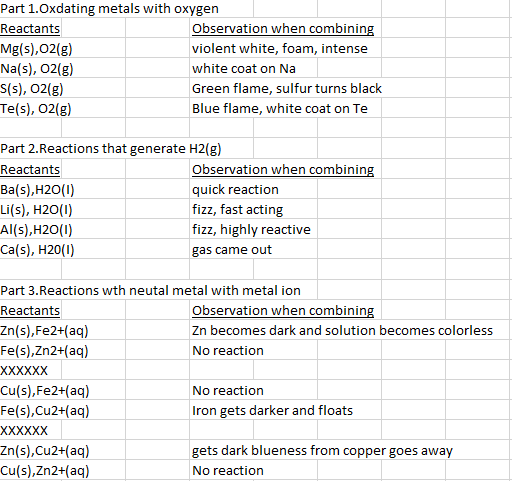(Solved): 1. From observation in part 1, which of the metals reacts most vigorously with oxygen? Which react ...
1. From observation in part 1, which of the metals reacts most vigorously with oxygen? Which reacts least with oxygen? Explain difference based on periodic properties?
2.From results in part 3, rank Cu,Fe,and Zn from most reactive (reacts with each of the other metals to form the cation)to least reactive (reacts with none of the metals to form cation)
3.Does the ranking done in 2 match the reactivity series? Explain
4.From part 2, compare the relative reactivies of the metals to the first ionization energies for these metals. Is there a relationship between ionization energies and reactivity? Does any data from part 2 not fit that trend?
5.Most of the reactions in part 2 produce hydroxide. Why arent they considered acid base reactions?
6.Based on the trend in periodic properties found in the previous questions what would you predict the reactivity of potassium to be compared to the metals tested? Why? And what about strontium?
Expert Answer
solution:- 1) Magnesium(Mg) reacts most vigorously among the given metals. 2) zinc reacts with both Fe+2 and Cu+2 . so zinc (Zn) is most reactive. Again iron (Fe) is more reactive than Cu as Cu does not reacts with Fe+2 but Fe reacts with Cu+2 . so t
